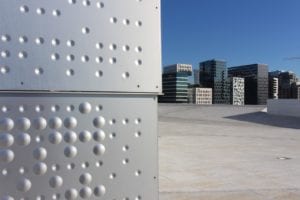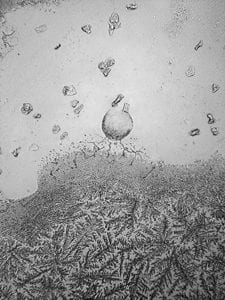Prolonged exposure

What is Prolonged Exposure therapy?
Prolonged exposure (PE) is a psychotherapeutic approach, which aims to teach trauma victims how to gradually approach their trauma-related memories, feelings and situations.
The aim is to reduce or remove the fear associated with the trauma-related memories and the triggers, so that the person no longer has to avoid these.
Avoidance
Avoidance is an important symptom related to trauma. Avoidance is about avoiding stimuli that are linked to the traumatic event or events: that is, stimuli that can activate re-experiencing.
Examples of this type of stimuli can be both internal factors, such as own thoughts, memories or feelings related to the event.
It can also be external: as people, objects, places, sounds or smells that remind of the event.
Bad spiral
It is often the case that if one has first started with avoidance to deal with the trauma, it tends to happen so-called generalization.
This means that gradually more and more, previously "neutral" stimuli are linked to the experience of threat or danger. In this way, the avoidance spreads in step with the increased perception of danger in the surroundings.
By using avoidance, one avoids the (unproven) possibility of experiencing and learning that "The dangerous thing has happened before and it is safe now". In this way, the avoidance becomes a maintaining factor for the condition.
Exposure
Exposure is a tool or intervention often used in cognitive behavioral therapy (CBT), to help people confront their fears and phobias.
In short, it is about actively, under your own desire and control - deciding to expose yourself to or relive the fear-related internal/external object(s).
Exposure is a central part of all types of trauma-focused treatment – an important tool for reconstructing and creating more coherent memories.
Specific trauma treatment
Prolonged exposure is a specific type of CAT, which is primarily designed to treat trauma-related problems, such as PTSD.
Through the therapy, trauma victims learn how to gradually approach trauma-related memories, feelings and situations. In that way, take back your body, psyche and everyday life.
How does a typical PE treatment take place?
- Follows a defined protocol, which can be adapted to the client's needs.
- A course of treatment typically takes place over 3 months.
- Weekly sessions.
- Usually between 8 and 15 treatment hours in total.
- The lessons usually last between 60-120 minutes.
- This is so that it will be possible to carry out exposure and process afterwards.
- The therapist initially offers an overview of the treatment
- He/she then creates a formulation or understanding of the client's background and current complaints.
- Psychoeducation.
- Teaches the client breathing techniques to manage anxiety.
- After introductory classes, psychoeducation and learning techniques – the exposure begins.
- Imaginary exposure: The patient describes the event in detail, in the present tense, with the help of the therapist. Together, you discuss and process feelings aroused by the exposure. An audio recording is made of the class, so that the patient can listen to the recording between classes. This helps to increase the processing of emotions. At the same time, the patient gets practice in using the breathing techniques.
- "In vivo" exposure: deals with the patient confronting stimuli that induce fear, outside the therapy room, as a kind of homework. The client and the therapist together identify the stimulus(es) and situations that are linked to traumatic fear. You then agree on which specific stimuli you will confront as part of the exposure. This is designed as a plan, where you look at each part of the exercise itself. It is absolutely essential that the person experiences some mastery in the implementation itself.
- End
For more information
PE is one of the treatment methods recommended for PTSD by American Psychological Association (APA).
Here you can see a map video which explains the method and its principles.







